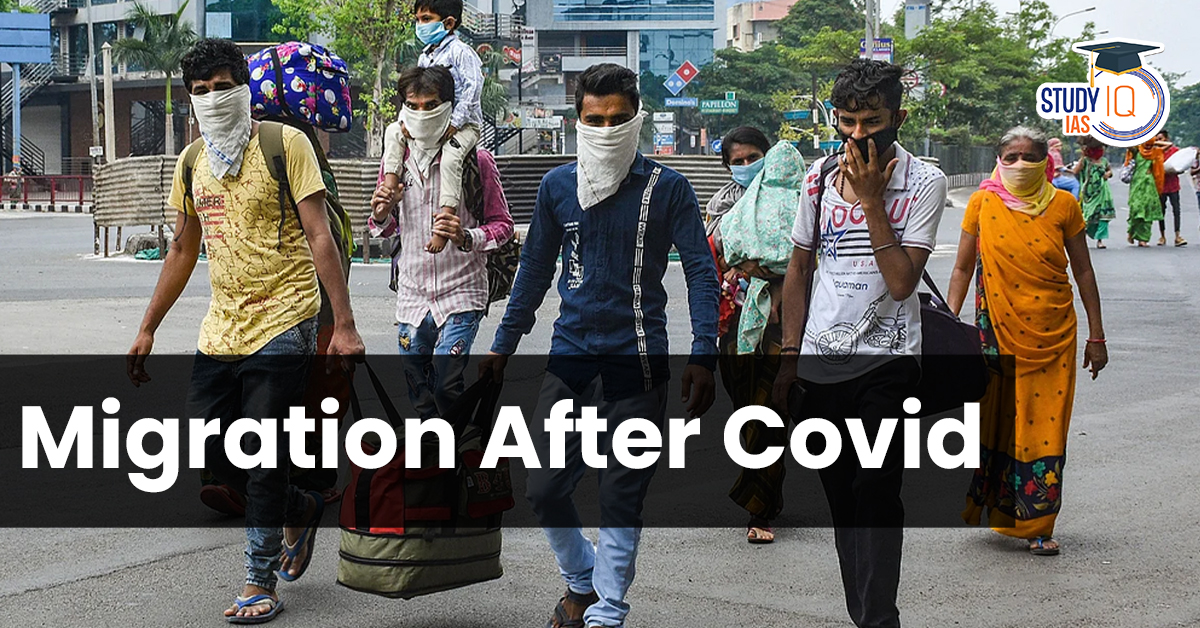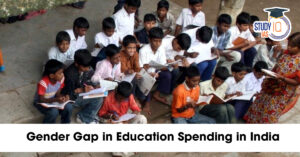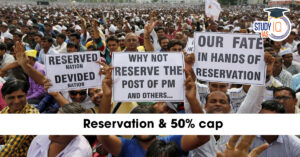Table of Contents
Context: There has been a significant shift in India’s migration landscape five years after the COVID-19 pandemic.
More in News
- Government estimates indicate a net reverse migration of 44.13 million individuals during the first lockdown and 26.3 million during the second lockdown.
- This movement primarily involved low-wage, low-skilled, seasonal, and short-term migrants.
Migration After Covid-19 Pandemic
Most reverse migrants have likely returned to urban areas because of the Rural economy’s limitations, such as:
- MGNREGA provided only partial and temporary relief.
- Lack of economic opportunities, rural distress, and low rural wages
- Urban aspirations continue to drive migration back to cities.
- Climate change is significantly impacting agriculture and allied activities.
- Contributing to distress and aspirational out-migration.
| Fact |
| Urban migration projections: 40% of India’s population will reside in cities by 2026, driven by initiatives like the Smart Cities Mission, which aims to develop urban hubs that rely heavily on migrant labour. |
International Migration Shifts: Post-pandemic, international migration patterns have shifted:
- Migration to Gulf Cooperation Council (GCC) countries remains strong.
- Indians were the top beneficiaries of the EU Blue Card programme in 2023 (work visa for highly qualified professionals).
- An increase in migration to non-traditional European destinations such as Malta and Georgia has been noted.
- Indian migrants are also moving to Africa for opportunities in sectors like IT and healthcare.
Challenges Faced by Reverse Migrants
- Wage theft.
- Acute food insecurity.
- Lack of access to healthcare and education.
- Discrimination and stigma.
- Economic strain on families reliant on remittances.
Also Read: Impact of Covid-19 Pandemic after 5 Years
Challenges in Migration Governance
Data Gaps
Delay in the 2021 Census hampers accurate assessment of migration patterns and the pandemic’s long-term impact.
- Periodic Labour Force Survey (PLFS) 2020-21 recorded a migration rate of 9% (slightly higher than 28.5% in 2007-08), but the data reflects temporary disruptions rather than long-term trends.
- Lack of comprehensive data on Indian emigrants — Ministry of External Affairs’ count is likely an underestimate.
Lack of Coordination Between States and Centre
- Migration governance is fragmented between central and state governments.
- Inadequate coordination leads to inconsistent policies and implementation gaps.
Lack of Migrant Support in Non-Traditional Destinations
Increasing migration to Europe (e.g., Malta, Georgia) and Africa has not been matched by sufficient support networks for Indian migrants in these regions.
Inadequate Social Security for Migrants
- e-Shram portal (2021) aimed to provide social security to unorganised workers, but registrations have plateaued due to:
- Lack of awareness.
- Digital access barriers.
- One Nation One Ration Card (ONORC) scheme (2018) faces challenges in reaching a large segment of migrants, leaving many without food security.
What Needs to be Done
Strengthen Data Collection and Analysis
- Complete the 2021 Census and update migration data.
- Establish a comprehensive database of Indian emigrants under the Ministry of External Affairs.
- Expand the Periodic Labour Force Survey (PLFS) to capture migration trends more accurately.
Expand and Improve Social Security Schemes
- Increase awareness and digital access for the e-Shram portal.
- Improve portability and inclusiveness of the ONORC scheme to ensure broader coverage of migrants.
Establish Migrant Support Networks in New Destinations
- Create support infrastructure for migrants in non-traditional destinations like Eastern Europe and Africa.
- Provide legal and financial guidance for migrant workers abroad.
Enhance Rural Employment Opportunities
- Strengthen MGNREGA with higher wage rates and longer work periods.
Promote rural industrialisation and skill development to create non-farm employment opportunities.
Integrate Climate Resilience into Migration Policy
- Develop targeted programs to address climate-induced migration.
- Provide financial and infrastructural support to climate-affected regions.
Improve Coordination Between Centre and States
- Establish a National Migration Council to ensure uniform policy implementation.
- Encourage state-specific migration surveys, similar to the Kerala Migration Survey model.


 Geo-tagging of Buildings During Upcoming...
Geo-tagging of Buildings During Upcoming...
 Gender Gap in Educational Expenditure in...
Gender Gap in Educational Expenditure in...
 Reservation and 50% Cap: Constitutional ...
Reservation and 50% Cap: Constitutional ...

























